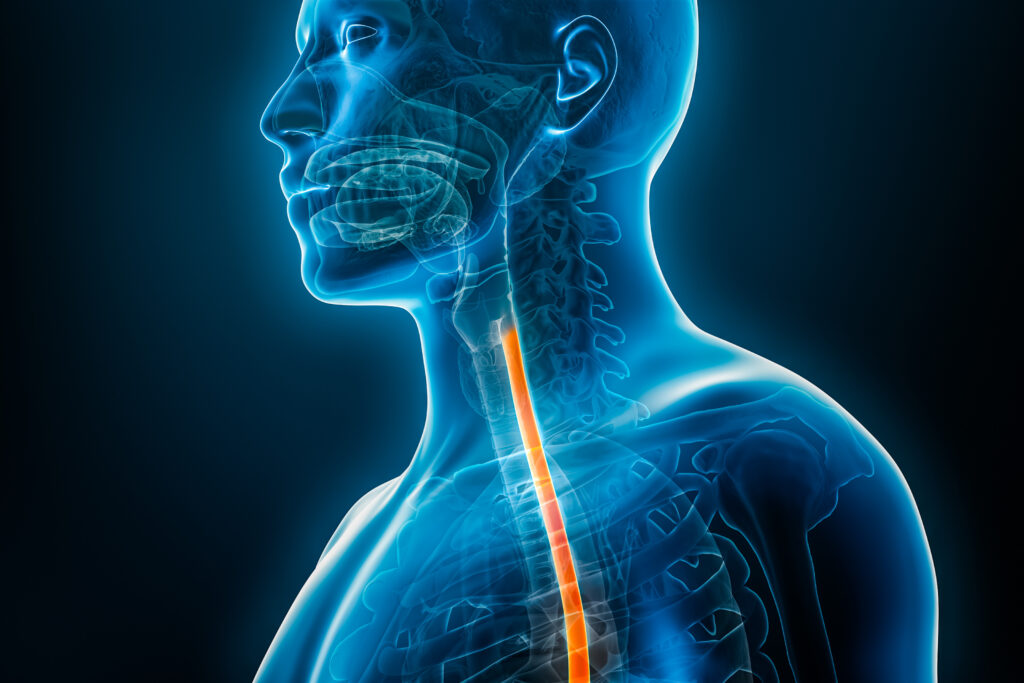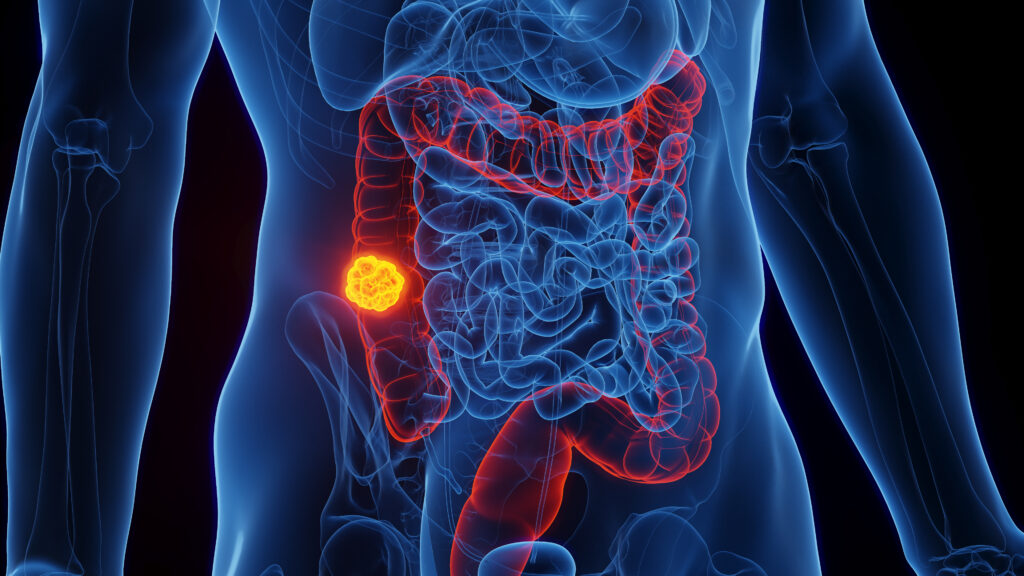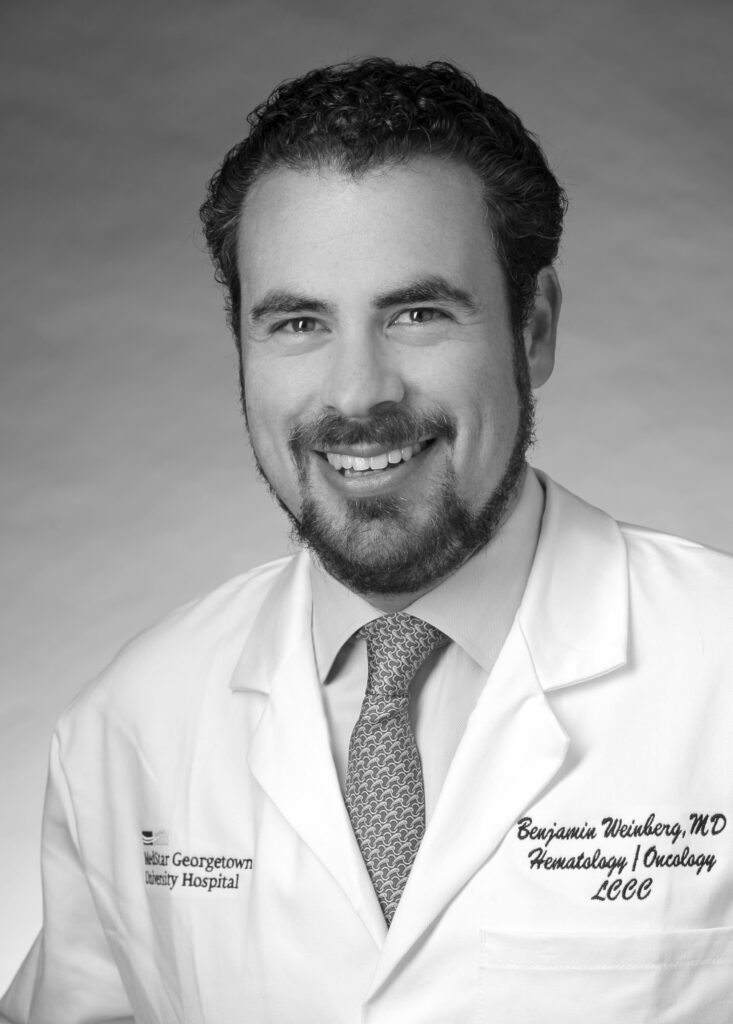Colorectal cancer (CRC) is the third most commonly diagnosed malignancy in the world.1 Screening for CRC or its precursor lesions (adenomas) by endoscopy with polypectomy has been shown to reduce CRC incidence and mortality.2,3 More vigilant screening and surveillance by colonoscopy is recommended for certain high-risk populations, for example patients with a positive family history of CRC and those with long-existing inflammatory bowel disease.4–6 Liver transplant (LT) recipients may potentially be classified as having a CRC risk in the same range as those with a positive family history. Due to improved patient selection, better short- and mid-term outcomes and advances in the post-transplant management of these patients, long-term complications in terms of de novo malignancy become more apparent and clinically relevant.7 This increased risk for malignancies (such as skin malignancies and post-transplant lymphoproliferative disorder [PTLD]) in LT recipients has been well documented.8–10 As a result of these cancer complications in post-LT follow-up, there is more attention on determining the usefulness of neoplasia surveillance programmes in these patients.11 Whether post-LT patients are also at an increased risk of colorectal cancer is still controversial, and the need for more vigilant or different surveillance programmes for CRC has not been determined. This short article aims to provide the most current evidence on the incidence of CRC in the post-LT setting as well as the usefulness of pre-transplant colorectal cancer screening in an LT candidate.
Defining High-risk Groups – Primary Sclerosing Cholangitis as Risk Factor for Colorectal Cancer Post-liver-transplant
Before providing an in-depth review of the incidence and risk of CRC in the post-transplant setting, we will discuss certain LT populations that have a higher a priori risk of developing CRC. One indication for LT, primary sclerosing cholangitis (PSC), deserves special interest in this respect. PSC is strongly associated with ulcerative colitis (UC), which by itself is a risk factor for the development of CRC.12 Approximately 75% of PSC patients suffer from (quiescent) UC.13 Longer duration and greater extent of UC have been reported to be important predictors for risk of CRC in UC patients.12,14 Additionally, it has been reported that the risk of CRC in PSC–UC is excessive compared with UC alone.15 An overview of studies investigating incidence rates of CRC in PSC LT recipients is given in Table 1 .16–23 The first reports that investigated relationships between PSC, UC and CRC in LT recipients were published in the early 1990s.18–20 Two large transplant studies published by a group in Birmingham (UK) and Dallas (US) reported an increased CRC risk in LT recipients for PSC with associated UC.16,22 The Birmingham group determined three important factors for the development of CRC in PSC post-LT recipients in a multivariate analysis: age >45 years, a more than 10-year interval between UC diagnosis and LT and the presence of polyps at colonoscopy.16 The cumulative CRC risk was 0, 20 and 38% at one, five and 10 years, respectively, in patients with two or three of these factors.16 Interestingly, these two studies did not observe CRC events in patients who had PSC without UC. Another study reported that the annual incidence of CRC in PSC patients (with UC) after LT approximated 1.25%. According to this study, this translated into a four-fold increase in risk for CRC compared with a historical control group of PSC-UC patients with similar follow-up but not treated with LT.17 It has been suggested that UC in PSC may be a silent or quiescent disease, where a subclinical timespan is present.24 Therefore, it may be difficult to estimate the exact onset of the disease. For the reasons mentioned above, it is thus recommended to perform annual surveillance colonoscopy in PSC patients irrespective of having a liver transplant.6,25
Incidence of Colorectal Cancer Post-liver-transplant
It is important to stratify for high-risk groups in LT patients for the determination of incidence rates that can be attributed to post-transplant influences. The incidence of CRC in post-LT recipients varies in the literature and most data are derived from retrospective studies. Well-designed prospective studies evaluating the risk of CRC in post-LT cohorts have not been conducted. A recent meta-analysis estimating the risk of CRC furthermore shows the lack of stratification of PSC/UC and non-PSC/UC post-LT recipients in retrospective series.26 Furthermore, comparisons with the general population (expressed as relative risk [RR] or standardised incidence ratio [SIR]) are lacking in most studies, whereas in a large proportion of studies the relevant follow-up data that are necessary to obtain incidence rates are missing. The studies with a large follow-up from the meta-analysis are listed in Table 2.8,10,11,27–36 A Canadian study involving 2,034 LT recipients found a 2.5-fold increased risk of CRC (95% confidence interval [CI] 1.4–4.4) in post-LT recipients compared with the general Canadian population with a considerable follow-up period (10,370 person-years).33 However, the authors from this study were not able to stratify for PSC and non-PSC LT recipients in the outcome measures for CRC. A study from the University of Wisconsin (US) confirmed these results in CRC for overall transplants (mean follow-up of 9.3 years), where 13 CRC (two events in PSC patients) were observed in 836 liver transplants.10 A large cohort in England reported a SIR of 3.47 for LT recipients without UC compared with the general population, and a study from The Netherlands observed a 12.5-fold (95% CI 2.5–36.6) increased CRC risk in a cohort of 174 liver transplants with a follow-up of more than one year compared with the general population.8,32 In this study, none of the cancers occurred in PSC patients. These findings contrasted with results from Pittsburgh (US), where a SIR of 1.06 for CRC was observed compared with the general population.29 Some other studies also found low CRC incidences but without comparison with the general population.22,28,30 A recent Dutch study substantiated these results with a SIR for non-PSC post-LT recipients of 1.26 compared with the age- and gender-adjusted general population.35
One of the problems with the published data on CRC incidence in post-LT patients is the lack of statistical power in most studies, as a large number of observed events are needed to provide a valid risk estimate. Therefore, the recent meta-analysis aimed to determine the pooled incidence and risk of CRC for non-PSC LT recipients, where the National Cancer Institute (NCI) Surveillance, Epidemiology and End Results (SEER) database from the US was used to derive an agematched control population. A pooled CRC incidence rate of 129 cases per 100,000 person-years was found with a corresponding SEERweighted age-matched control incidence of 71 cases per 100,000 person years. Subsequently, an estimated RR of 1.8 (95% CI 1.1–2.9) for non-PSC liver transplant recipients compared with the SEER population was provided.26 The non-PSC liver transplant group is a population that, in the absence of post-transplant screening guidelines, is assumed to be eligible for the general population guidelines for CRC screening and surveillance. Based on the pooled estimate, the CRC risk in non-PSC post-LT recipients is too small to adopt a more vigilant CRC surveillance programme. Large prospective cohort studies are necessary to determine the CRC risk in the post-LT setting that defines further recommendations. The impact of certain immunosuppressive agents may be considered as sub-analysis for dose–response relationships for CRC outcomes in LT recipients.
The Role of Pre-liver-transplant Screening
Pre-LT screening may affect the yield of CRC in the post-transplant period and therefore should be taken into account when evaluating CRC incidence in the post-LT follow-up. Reporting of pre-LT colonoscopies and their findings is often not provided in the literature. Subsequently, the type and quality of a screening examination should be taken into account. Sigmoidoscopy for instance is considered as a less effective screening strategy to detect advanced neoplasia compared with colonoscopy.37 The most relevant studies that evaluated pre-LT colonoscopy screening are provided in Table 3.38–44 As can be seen, the definition for advanced adenoma could not always be well distinguished between studies and not every study reported histology or pathology data concerning the colonic polyps that were found. Furthermore, except for a study from Japan,44 and the US,39 all studies were retrospective. In one study investigating 229 overall transplant recipients and pre-LT colonoscopy findings, 74 patients with polyps at pre-LT were identified. Of them, 45 (61%) had adenomas. The Japanese study identified three cases of CRC in a total of 67 patients who underwent colonoscopy as pre-LT work-up. All of these patients were living donor LT (LDLT) candidates.44 In a Dutch study, a prevalence of 2.1% for advanced adenomas was observed in the pre-transplant setting; 73% of all patients underwent a colonoscopy or the combination sigmoidoscopy and barium enema.35 This prevalence was in concordance with the prevalence in an asymptomatic Dutch general population cohort.45 It should be mentioned that pre-transplant malignancy or its precursor lesions may have an accelerated progression while patients receive immune suppressive therapy after LT and therefore the diagnosis of pre-existing extra-hepatic malignancy at LT work-up is a contraindication for transplantation.46,47
Based on the available literature, no recommendation for a pre-LT screening colonoscopy protocol can be given for LT candidates. Further studies must determine whether colonoscopy as an integral part of pre-LT screening work-up would be cost-effective. Screening for CRC in liver transplant candidates should not be more often or earlier performed than in the general population until survival benefit in post-LT patients or cost-effectiveness can be provided for the pre-LT colonoscopy screening approach.
Post-liver-transplant Colonoscopy Screening/Surveillance
Evaluating the current evidence, the place for screening and/or surveillance colonoscopy for non-PSC post-LT patients is still questionable. Studies that investigated post-LT surveillance are provided in Table 4.11,34,43,48–50 As noted before, none of them were prospective and applied a systematic screening strategy in all patients at fixed surveillance intervals. The time interval between LT and post-LT colonoscopy in patients is important. A reasonable interval between LT and post-LT colonoscopy is necessary to observe an increased adenoma prevalence compared with asymptomatic non-LT cohorts (general population) that can be attributed to posttransplant influences. This principle also applies in the case of pre-transplant adenoma findings, where the appropriate control values should be derived from surveillance colonoscopy studies stratified for baseline characteristics in the general population. Some of the studies provided in Table 4 suggest that there may be a trend towards increased potential in the post-transplant period for (advanced) adenomas. In a Dutch study, the RR for adenomas in LT recipients <50 years of age was 3.6 for all adenomas and 8.9 for advanced adenomas compared with an asymptomatic general population cohort.48 Limitations from this study were the small sample size and the absenceincreased potential for development of advanced adenoma in post-LT recipients.51
Three studies evaluated the utility of surveillance colonoscopy post-LT in a case–control setting. Two of them concluded that an increased risk (odds ratio [OR] 4.5, 95% CI 1–21.1; increased the prevalence 7.3 versus 1.2%) for adenoma was observed in LT recipients compared with their controls from the general population.49,50 The third case–control report could not confirm these findings. They reported on 74 overall transplant recipients with polyps at pre-transplant colonoscopy in the setting of the surveillance outcome compared with a surveillance control group (n=75) from the general population. Both groups had polyps at pre-transplant colonoscopy. The pre-transplant adenoma prevalence did not significantly differ between the groups. The outcome was defined as metachronous adenomas found at the first three-year surveillance procedure. Thirty eight per cent of transplant cases and 43% of controls developed metachronous adenoma at surveillance interval in the post-transplant setting, although the study reported the effect forthe overall transplant population (kidney, liver and heart).43 Of note, it should be mentioned that the distribution of cancers between liver and, for example, kidney transplants has been reported to be strikingly different.52 Therefore, extrapolating assumptions about cancer incidences for overall transplants to LT recipients may not be appropriate.
A study from Spain mentioned surveillance colonoscopy protocol to every patient between seven and 10 years post-LT. However, data about the findings in terms of advanced adenomas or the proportion of screened patients post-LT were not provided. Three of four CRC cases were diagnosed by symptoms; one CRC was detected by screening. Unfortunately, details about the patients with symptomatic CRC were not specified (i.e. lack of adherence to the surveillance protocol or interval carcinoma despite surveillance colonoscopy).11 In our opinion, based on the available data for surveillance in post-LT patients, the evidence for increased risk of advanced adenomas in the post-LT setting is scant. It does not justify an intensified surveillance strategy post-LT for non-PSC LT recipients.
Conclusions and Future Challenges
Patients with PSC/UC have an increased risk of the development of CRC. These patients are eligible to enter a surveillance programme for colorectal neoplasia. The recommended surveillance interval should be annual colonoscopy, irrespective of receiving a liver transplant. PSC may also be a confounder for the incidence of CRC in the post-LT period because it is both associated with exposure (indication for LT) and the outcome (CRC). Therefore, stratification is important to obtain precise incidences for CRC in PSC and non-PSC LT recipients. The incidence of CRC in the post-LT period varies in the literature and there are qualitative reporting deficiencies concerning incidence data but also lack of PSC stratification. Furthermore, many studies do not have a formal statistical comparison to the general population. Nevertheless, based on (pooled) available data it seems appropriate to classify non-PSC LT recipients as a higher-risk group than the general population. The results should be taken with caution, because differences between studies were observed. The small but increased risk that has been reported (RR = 1.8, 95% CI 1.1–2.9) may be too small to adopt more vigilant surveillance intervals for these patients. Pre LT evaluation may be a good investment in an LT candidate although studies are insufficiently powered to confirm the benefit. Until that becomes available, no recommendation can be provided as to whether pre-LT colonoscopy should be advocated in these patients or not. LT candidates may receive the same screening strategy as is recommended for the general population until further evidence becomes available for survival benefit in post-LT patients and cost-effectiveness of pre-LT colonoscopy. Concerning post-LT surveillance, a prospective study with a systematic screening approach would be highly recommended. Such a study is a necessity in order to define the prevalence of advanced neoplasia more precisely in liver transplants. In our opinion, no intensified surveillance strategy should be advised for non-PSC LT recipients in the post-LT setting until the results from such a prospective study are available. ■












